
e86) Thermionic Valves (tubes)
List of related
pages:
g34
elektronrör teknikk - på norsk
e11) Receiver Intermediate Frequency
List
e12) Data for German communication
receivers
e87 Dumpbuizen voor VHF en UHF (not completed)
**** Hallvard Torgersen, LA2AD: Tyske
radiorør (1946)
11c.
Content for search on the pages
(not complete, will apply search engine later)
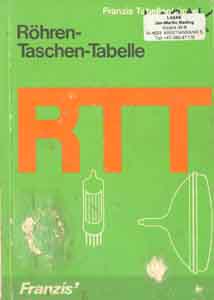 |
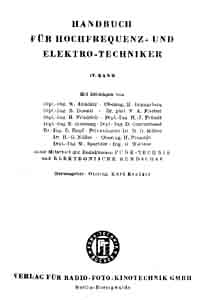 |
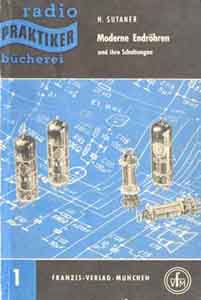 |
RL2T2, RL2P3 data,
see page e81

CCCP types, the first is a later
version of the third
see the available data here (search for 12Z1)
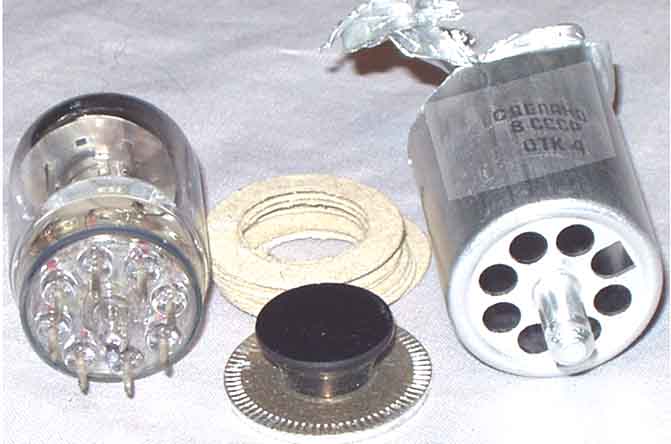 |
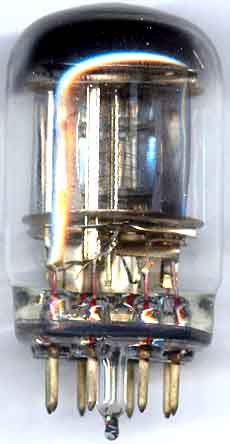 |
Just curious, and since the loctal based 12Z1 type (Russian
RV12P2000) was shown opened
on another site, although he claimed it was difficult to do, I
decided try first it with 2Z27
which has a similar look. These types are inexpensively obtained
at flea markeds in Germany.
It took me just a few minutes using a side cutter to bend the
upper edge out. Fortunately
it is some paper rings inside the top of the aluminium tube -
they protect the glass envelope
as you proceed since the edge will eventually be flat and could
had destroyed another valve.
It was later discovered that they had all the same looking; 12Z1,
2Z27, C3g, C3m, C3o.
The main difference is that the Russian type of tubes must be
opened in the upper end,
while the Siemens metal covered types (C3g, C3m, C3o) are opened
from the bottom side.
Pin 6 on "2 Z 27" has been identified with a flat edge, so it
is still possible to use it without the
outer aluminium screen, the center pin is only connected to the
outer screen.
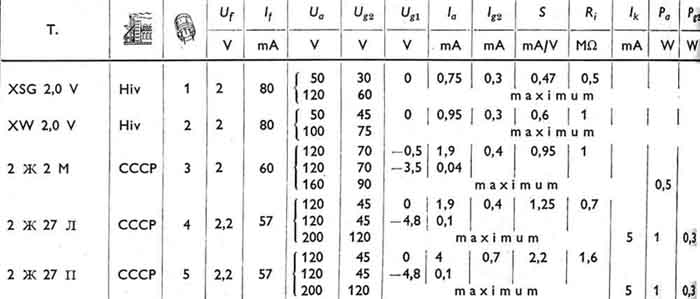
Data for 2 Z 27 (two different versions) from Piotr
Mikolajcyk's Universal Vade-mecum (1960)
see Frank's info for the
explanation about cyrrilic type numbers
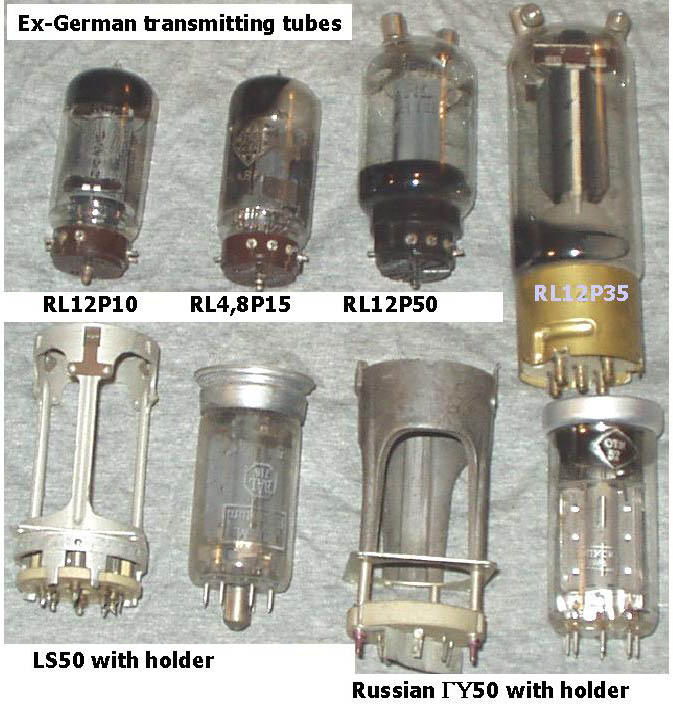
German transmitting types

GU50 (GU50) - an equivalent, but not interchangeable
with LS50
click on the picture for more data
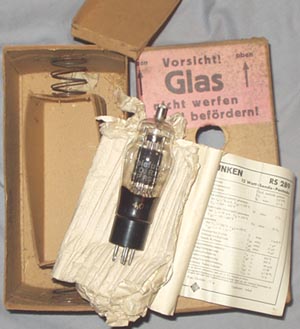 |
|
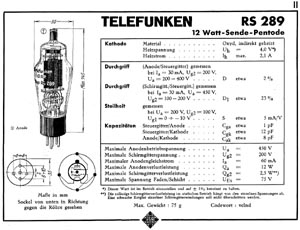 |
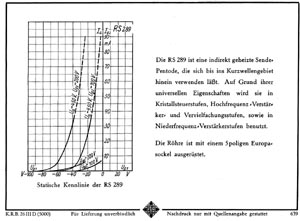 |
Telefunken RS289 II
- 12W transmitting valve - with very rugged package
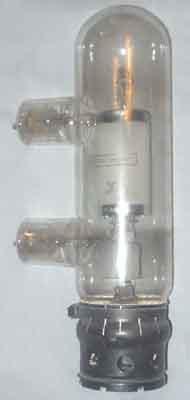
RS329 IIIg was used in a
500kHz transmitter (Ehrenmal?). Got it way back in the army
(Alta) in 1967,
the transmitter was long gone, but the store still existed. It
measures 9cm dia, 35.5cm long.
 GI7b CCCP transmitter tubes based on old Telefunken
metal-
GI7b CCCP transmitter tubes based on old Telefunken
metal-
ceramic types
LD7, LD9 (=GI7B2, GI7B3, just GI7B2, GI7B3),
similar types also reinvented
by EIMAC, RCA and others when they had first discarded
German technology (since everything is best
in America....!) Tnx to DL1OY Helmut Liebig
for mentioning the relation to Sowiet tubes in the first
instance.
 Information is also
available from Werner Gierlach, DL6VW (email)
Information is also
available from Werner Gierlach, DL6VW (email)
More info for correct application
of transmitting tubes is found at G3SEK's
Amateur Radio Technical Notebook
It is useful to check Frank Philipse's Valve data base
you may even search those cyrilic type valves
General info about German types Norwegian
Radio-Historical Society
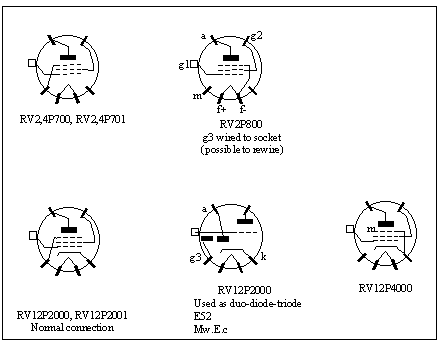 |
Some common type German socket connexions
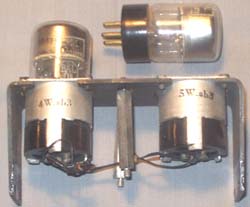
STV150/40 voltage regulator - somewhat unusual socket
Suppose it is from DMG5 "Michael" (got it from LA1OB)
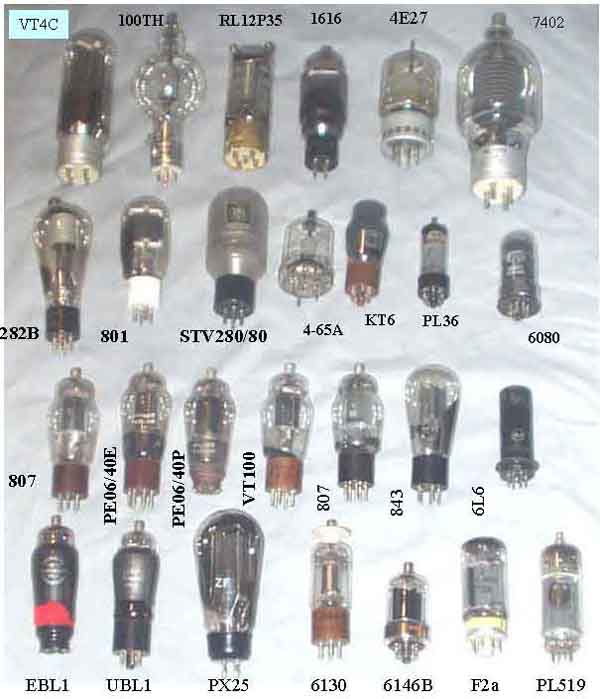
Valves:
VT4C, 100TH, RL12P35, 1616, 4E27, 7402
282B, 801, STV280/80, KT61, 4-65A, PL36, 6080,
807, PE06/40E, PE06/40P, VT100, 807 (Tungsram), 843, 6L6,
EBL1, UBL1, PX25, 6130, 6146B, F2a, PL519
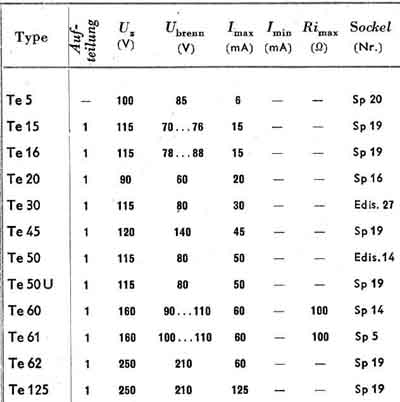
Neon type valves for RX input
protection and voltage stabilisation;
Te5, Te15, Te16, Te20, Te30, Te45, Te50, Te50U, Te60, Te61, Te62,
Te125
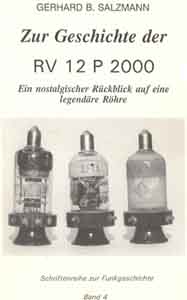 |
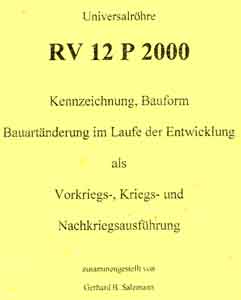 |
Gerhard B. Salzmann, DL2IE has written two books about
RV12P2000-series of valves, the first is
zur
Geschichte des RV12P2000 - bought it as a
member at GFGF, and the second is
Universalröhre
RV12P2000 (1997) - good colour prints -
available from Werner Gierlach, DL6VW
TUBE testers.
It is my opinion that tube testers are mainly made for idiots,
since as Hewlett Packard points out
a the best tube tester is the instrument it is used for. A tube
(valve) may well read "bad" but still
function perfectly for many years to come, and only the fool will
decide to replace it.
As an electronics engineer with over 40 years experience with
electronics I've seen many of such
fools who replace tubes, but never compare the reading of the new
ones, they might learn that the
reading is just as those they discard.
On our old local TV transmitter (RCA TSL-5) we had an inspector
who checked all tubes every year,
and when he went, the transmitter transmitted only black picture,
and bad sound and other characteristics,
so he claimed it was good enough as spare transmitter. So we had
to search the dustbins and find the old
discarded tubes to find some which would operate at critical
stages. It wasn't the reading, but the
performance which is important. Very few - if any - measures
performance of say, 6AG5 or 6AG7
on 45 or 200MHz, nor will it show video distortion for an 807
(5963), 6V6, 6146B or other.
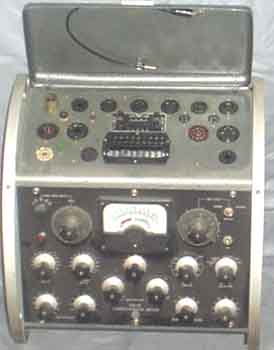 |
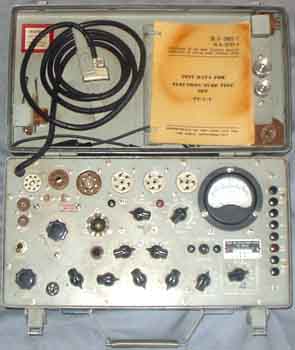 |
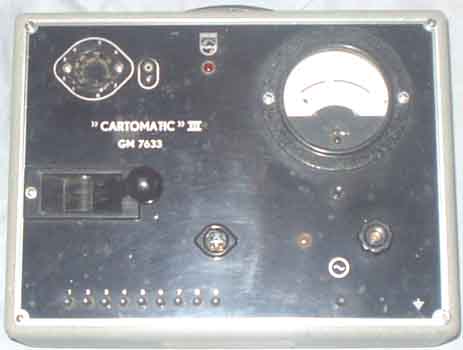 |
Valve testers: AVO Valve characteristique meter, TV7A/U, and
Philips GM7633 "Cardiomatic" III
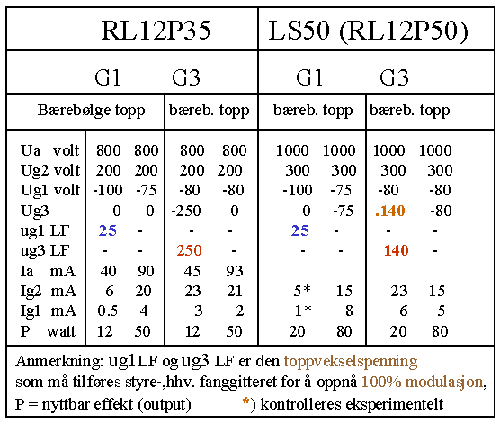
Some data from F8MX's article about modulation, see pg 30b (Norwegian
language)
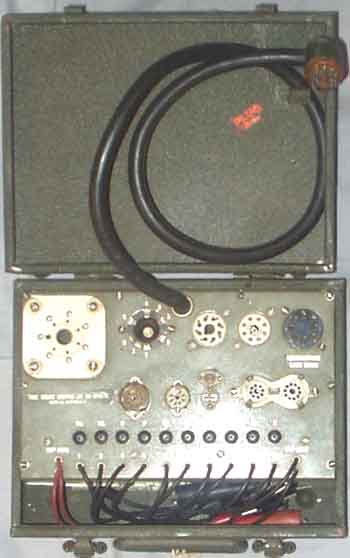
Adapter kit MX-949A/U
for I-177 tube tester, predecessor of TV-7
Nolan Lee's site for tube testers
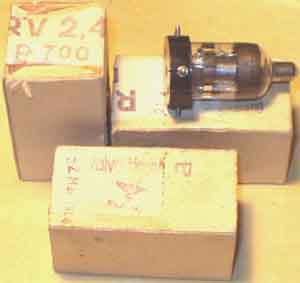
What is the loss of value when I open the sealed box?
(RV2,4P700)
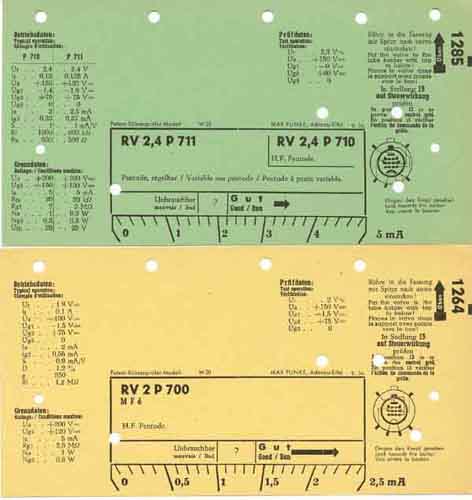
Some testcards for MAX FUNKE valve tester
More data for very old valves:
http://www.hupse.nl/radio/tubes/
